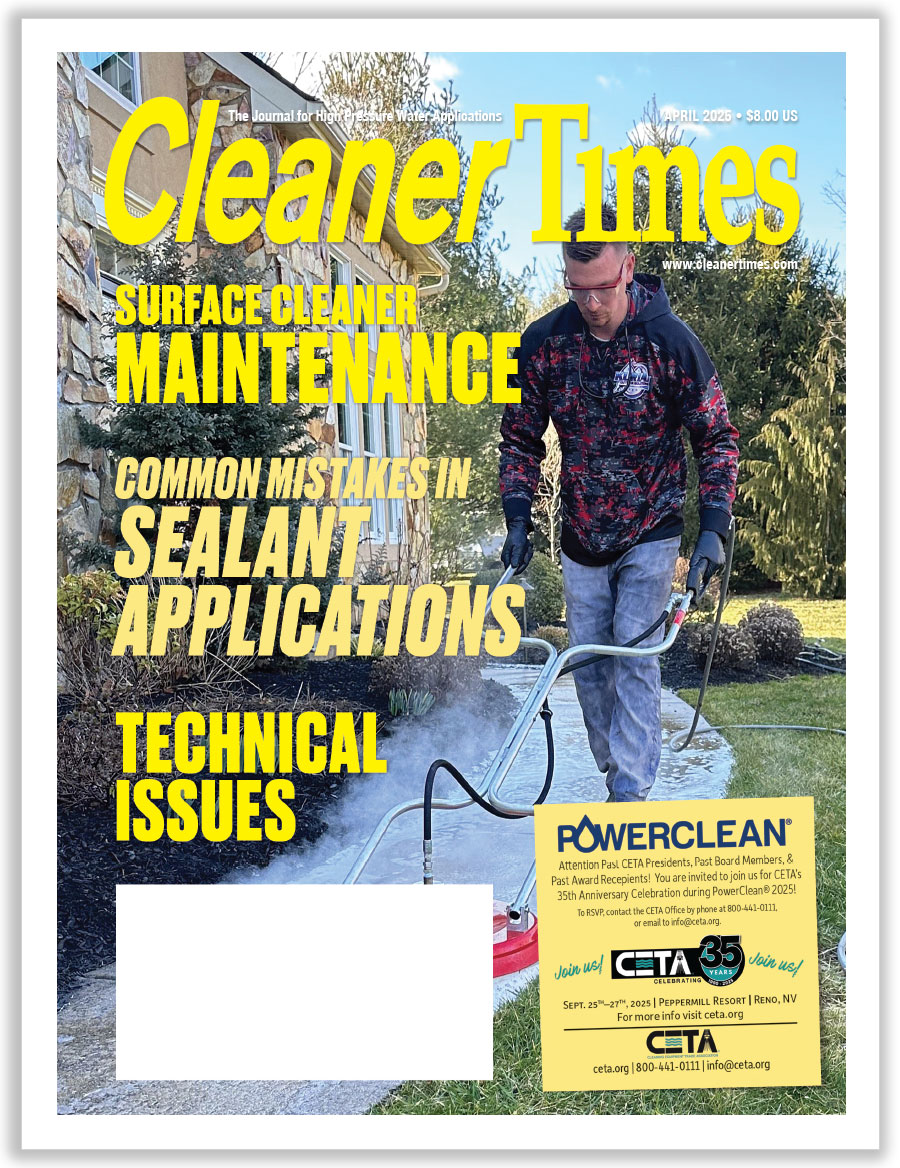
Gaining Perspective on the Industry’s Future
By Diane M. Calabrese / Published December 2017

The seer is a recurring character in classic western movies. Mose Harper, the less-than-reliable forecaster in The Searchers (1956) is a memorable example.
The Harper character is doubly interesting because it was played by Hank Worden, who had a degree in engineering and worked in rodeos until a fall took him off the circuit. Could he have foreseen the shifts his career path would take? Perhaps in part, as the move from rodeos to westerns was a common one.
Change is rarely abrupt, although in retrospect we sometimes perceive it as less than gradual. And change is always a constant. That’s true today, and it will be true in the future.
We gain perspective about the future via reflections from three members of our industry. Each member is deeply immersed in the industry, and each one has a slightly different vantage, with distribution, manufacturing, and contracting represented.
Let’s start with Roy G. Chappell, CEO of Chappell Supply and Equipment in Oklahoma City, OK. He runs a distributorship keen on providing customers with complete, one-stop solutions, and Chappell has an unreservedly positive outlook.
“One of the things that’s really surprising to me is the number of mergers and acquisitions in the last few years,” says Chappell. It’s something that “happens as an industry matures,” and it should not be concerning because there is a counterweight.
Yes, there is consolidation. “At the same time, there’s a lot of expansion in our industry—parts washers and wastewater treatment,” says Chappell. He cites the way “bio-bugs and enzymes” now augment or supplant filters for water treatment as another of the exciting areas of development in our industry.
“One of the biggest things I see is in the wastewater treatment part of the industry,” says Chappell. “It will probably double or triple in the next three to five years.”
Chappell’s efforts in helping customers get the precise systems they require has become wider in scope and geography. “As you get involved, it’s amazing how word gets around about treating wastewater streams,” he says.
Work has taken Chappell’s company to California, Montana, Canada, states in the East, and well beyond. “We do stuff with customers out of Australia and New Zealand,” he explains. Chappell exudes optimism. “Right now, the economy as a whole is picking up,” he says. “There will be a ripple effect. More people will be hired.”
One obstacle Chappell sees to more hiring is finding capable individuals. It’s important that companies hire those who can both do the job—whatever it is—and be willing to learn.
“The one thing I think we’re missing in our industry is that it’s always been a sort of mom-and-pop industry, with five or six employees to a company,” explains Chappell. “Now we’re heading toward expansion—toward 100-plus per employer.”
With the growth, companies are adding not only individuals, but also new ideas and methods, says Chappell. Many new employees are entering the industry with college degrees in engineering and business, as they have in the past. Other individuals entering the industry are bringing a variety of degrees from higher education and adding to the idea pool. It’s a good outcome if the hires are committed to doing their best.
“Companies will continue to grow,” says Chappell. “The industry is headed for tremendous expansion.”
Optimism Amplified
Industriousness and innovation are inextricably linked. They can be observed across the industry, says one of our experts as he points to another positive sign for the future.
“The vast amount of industry experience among distributors coupled with a willingness to embrace newer technologies to make us all more efficient and effective is the new model for success,” says Bill Fischer, vice president–industrial sales with FNA Group in Pleasant Prairie, WI. “This bodes well for the future of our industry.”
Putting the many pieces together will be even more significant in the future than it has been in the past. Continuous improvement, demonstrated competencies, and commitment to total solutions will all be part of the industry.
“While there have been some product enhancements and improved values along the way, we see a great opportunity for innovation as it pertains to specialized products for specific applications, training and certifications for cleaning professionals, and most of all, how we most effectively execute the sale,” says Fischer.
Getting products into the hands of professional contractors, municipal buyers, and others will increasingly take on a different look, according to Fischer. “The biggest change we envision is the migration to a broader distribution channel,” he says. “What may have worked in the past could give way to expanded use of technology to better serve the end user.”
More and sustained interaction between vendor and buyer may also be on the horizon. “Even greater opportunity for distributors who partner with the pro users and municipalities in helping them maximize their equipment investments” will be part of the future, too, says Fischer.
Across industries, Bluetooth technologies are making it possible for distributors and vendors of products to get real-time data about how their products are being used. Analysis of such data coming in all directions, from electric toothbrushes to timber harvesting machines to yoga pants, is changing the way manufacturers improve their products.
Contractor Caution
Whether or not real-time data collection and analysis of an end-user’s habits can contribute to the highest standards of approaches among equipment users may be a question for extended debate. Or, at least the test of time will tell. The focus on standards, though, would be a welcome one by a member of our industry tied closely to individuals using equipment.
In many places, any person can buy a pressure washer and start a power washing business. There is no standardization via licensure or certification, and there is a great deal of competition.
“I think the number of competitors in the industry is hurting the standards and the quality of work,” says Daryl Mirza, president of Averus in Gurnee, IL. “It’s a price-driven business that portrays the notion that if you are cheaper, then you must be better. That notion is far from the truth.”
It takes an investment of time (and correspondingly, money) to get a job done correctly. Those who deeply discount prices for jobs may be undercutting themselves in the near term, but they are also hurting the industry in the long term.
How do some contractors manage to charge far less than others? “They are taking shortcuts and not having the certifications, insurance, and dedication to their industry,” says Mirza.
Unfortunately, explains Mirza, there is a feedback loop that involves customers who choose based on price. “Customers are not caring about quality, either. Instead, they are just searching and considering prices. That is what is driving the industry.”
Bona fide contractors who meet payroll, pay taxes, and obtain all required permits, licenses, and so on have many expenses. It’s difficult for them to compete with individuals who are essentially working outside the system.
In 2018, there will be continued pressure on contractors. “The cost of labor is going to be the biggest adjustment in our industry,” says Mirza. “We need to keep the costs under control.”
With the nation moving toward full employment, hiring employees may mean raising wages. For professional contractors who meet all the legal obligations of an employer, competing with those working outside the system can be very difficult. “Those working outside the system do not have these concerns and just keep driving prices down,” says Mirza.
As many jurisdictions consider mandating a minimum wage of $15 per hour, there is another source of concern for cleaning companies, says Mirza. The hourly wage bump is not the only cost increase an employer will have to absorb. There are the corresponding costs, such as higher contributions to the employer portion of FICA. It will be a challenge for some businesses to remain profitable.
Candid, yes, but Mirza is still optimistic about the future of the industry. One of the positives that makes him so is the synergy among industry members. “The industry is getting more interested in a national presence in order to help reduce the overhead of managing multiple vendors,” he says.
Resourcefulness of the sort Mirza cites manifests itself in many ways across the industry. It’s the there’s-a-solution-to-every-problem philosophy that allows for navigating the most difficult times and the challenges in good times.
National Outlook
Through the first half of 2017, the U.S. economy was doing very well. The real gross domestic product (GDP) increased at a rate of 3.1 percent in the second quarter. (In the first quarter, the GDP increased at just 1.2 percent.)
Third-quarter growth was jarred by hurricanes, and fourth-quarter growth will reflect a hurricane and fires. Still, the Conference Board persists with an upbeat outlook for the U.S. economy. It estimates faster growth in the economy into 2018, and it is particularly positive about the manufacturing sector, which is responding to an increased appetite among buyers for capital equipment. Even an increase in interest rates is not seen as something that will dampen growth.





